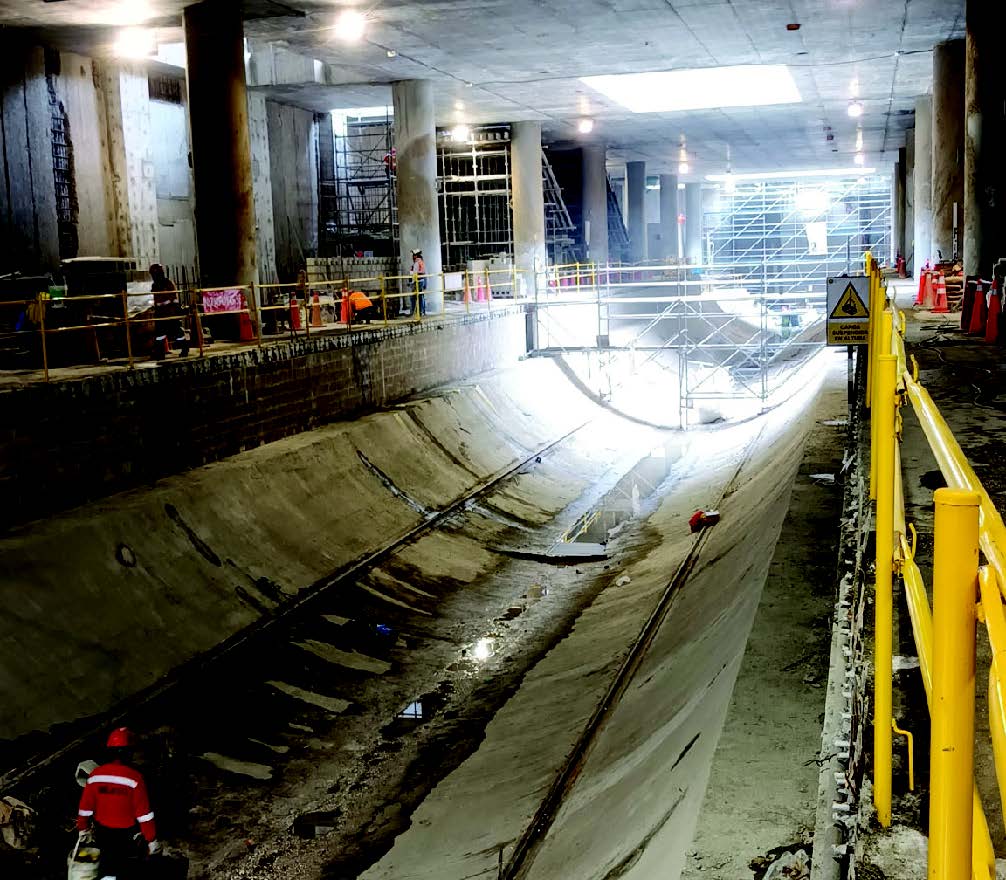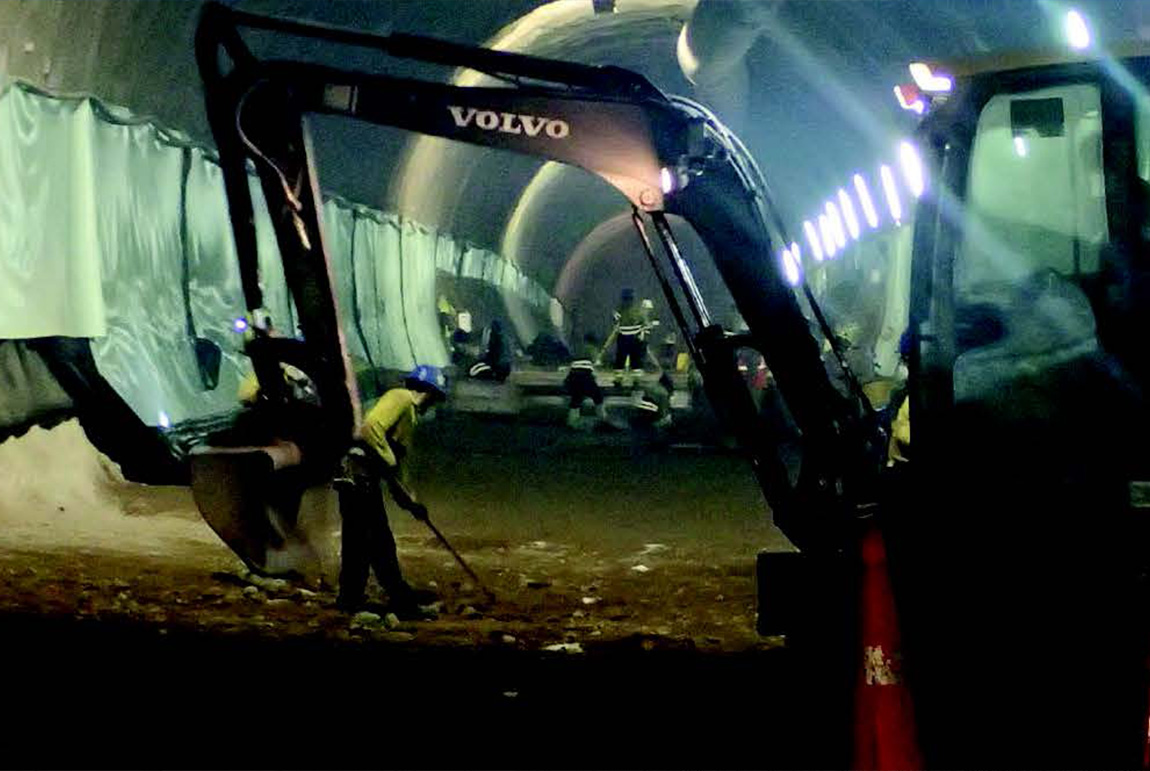Effluent control – Lima Metro, line 2
Description of the Environmental Measure
Problem detected:
The Lima and Callao Metro 2 project is considered to be a megaproject, not only because of its huge size, but also because it is the first underground railway system to be built in Peru.
The activities necessary in order to undertake the project include the use of material to deliver concrete and/or shotcrete inside the tunnel. All this machinery needs to be cleaned after use to ensure that it will continue to work properly and prevent damage to equipment such as premature wear, blocked concrete lines or increased concrete-pumping and mixer-truck rates.
However, the machinery taken down into the tunnel does not return to the surface until the sections are complete. This poses a problem in terms of the lack of suitable cleaning areas for machinery that remains underground for long periods.
Solutions adopted:
In order to strengthen appropriate environmental management and care during the washing of machinery inside the tunnel, control measures need to be put in place.
This involved creating a "cleaning shaft" with a stable area indicated by the production area of the project, for temporary use, which could not exceed 80% of the volume for elimination to an authorised site.
This shaft is also waterproofed to prevent any seepage or waste from penetrating the soil. Once the material has solidified, it is removed to be handled as non-hazardous waste and taken to a rubble deposit.
Results:
The priority that FCC Construcción affords to quality in its monitoring and control assure the appropriate environmental management and care during machinery-washing activities.
In order to protect the quality of the soil, the washing-shaft system has been implemented in all the tunnels in stages 1A and 1B of the project, built according to the NATM method for conventional tunnelling.
The success of this initiative is due to the supervision carried out by the Environment Department of the M2 Lima Construction Consortium and the continuous training given to the machinery operators. These actions have encouraged more responsible behaviour and increased environmental awareness, thereby achieving the expected results and complying with the established expectations regarding feasibility.










